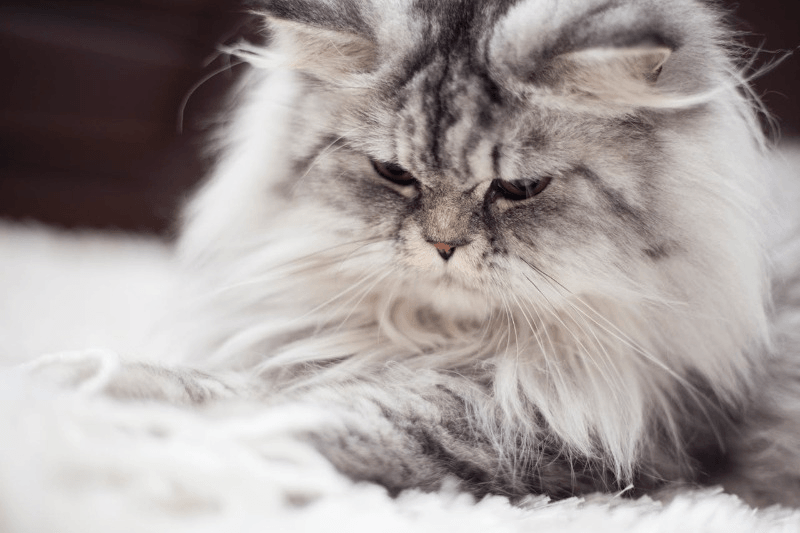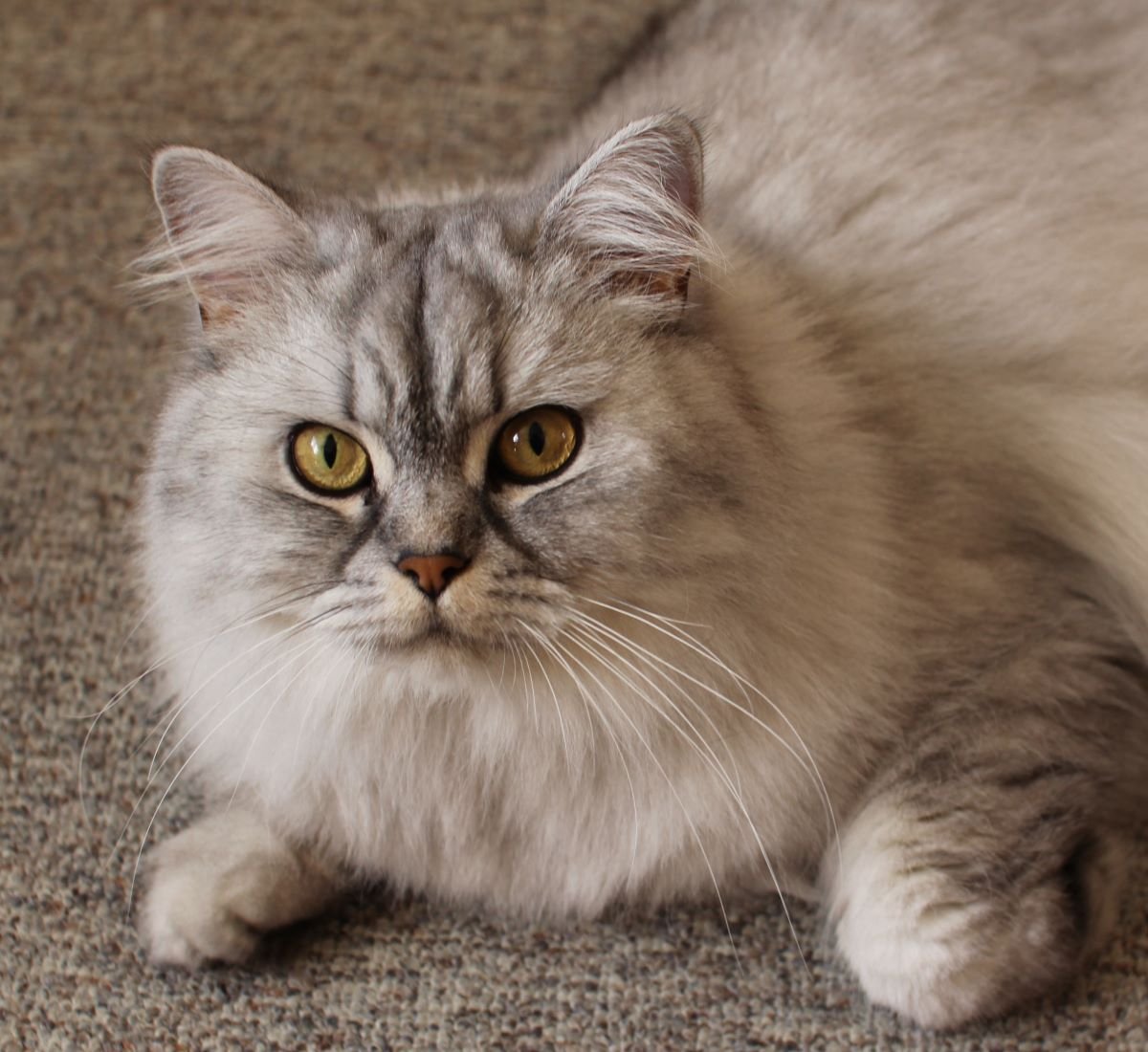The Persian cat breed stands out in the feline world with its luxurious coat, distinctive flat face, and calm demeanor. Originating from ancient Persia, these cats have become a symbol of elegance and grace in households around the globe. Known for their gentle nature, Persian cats make ideal companions for those seeking a serene and affectionate pet. Their long, flowing coats require regular grooming to maintain their beauty and health, highlighting the commitment needed to care for such a refined breed. As one delves into the world of Persian cats, understanding their needs and characteristics becomes essential for fostering a loving environment where these majestic creatures can thrive.
Key Takeaways
- Persian cats are a luxurious and affectionate breed, ideal for families and individuals seeking a calm and loyal companion.
- Regular grooming is essential for maintaining their long, beautiful coat and overall health; daily brushing can prevent matting and reduce shedding.
- Understanding potential health issues, such as respiratory and renal problems, is crucial for early detection and treatment, ensuring a longer, healthier life for your Persian cat.
- Creating a comfortable living environment, including quiet spaces and regular playtime, can significantly enhance the well-being of a Persian cat.
- When looking to adopt a Persian cat, seeking reputable breeders or adoption centers is vital; they can provide valuable advice and ensure the cat’s health and pedigree.
- Investing time in learning about the breed’s specific needs can lead to a rewarding companionship, enriching both the owner’s and the cat’s lives.
Breed Overview
History
The Persian cat, with its luxurious coat and regal demeanor, traces its origins back to the 1600s in Persia, now known as Iran. These cats were highly valued for their striking appearance and were often seen as symbols of wealth and luxury. They made their way to Europe, where they quickly became a favorite among nobles and royalty, embodying exoticism and sophistication.
By the 19th century, the Persian cat had become one of the most popular breeds in the Western world. This period marked significant evolution in the breed’s characteristics, cementing its status as a beloved pet.
Physical Characteristics
Persian cats are renowned for their long, luxurious coats and distinctive broad, flat faces. Their fur can come in an array of colors and patterns, making each one unique. The variety includes solids, bi-colors, and even more intricate designs like tabby or calico.
Their large, expressive eyes are another hallmark of the breed. These can be deep blue, copper, green, or even odd-colored in some individuals. The combination of their plush coats and captivating eyes makes Persians truly stand out.
Personality and Temperament
Persian cats are celebrated for their calm and gentle nature. They thrive in serene environments where they can lounge in comfort without much disturbance. Despite their royal appearance, they’re quite affectionate with family members. However, they tend to be reserved around strangers.
They are not overly demanding but will make their presence known through soft, melodious vocalizations when they seek attention or companionship. This blend of quiet dignity and loving gestures makes them cherished companions.

Health And Care
Common Health Issues
Persian cats are known for their stunning long coats and distinctive facial structures. However, these features can also lead to specific health challenges. One significant concern is polycystic kidney disease (PKD), a genetic condition that affects the kidneys. Regular vet check-ups are crucial for early detection of PKD and other issues.
Their flat faces may cause respiratory problems. It’s important for owners to monitor any signs of breathing difficulty. Heart conditions and eye problems are also common in Persian cats, making regular health assessments vital.
Obesity can be a problem too. Maintaining a healthy weight is essential to prevent related health issues.
Dietary Needs
A balanced diet is critical for Persian cats due to their indoor lifestyle and lower energy levels. Their diet should include specific nutrients to support their luxurious coat and overall health. High-quality proteins and omega-3 fatty acids are beneficial for their fur.
Portion control is key to preventing obesity. A mix of dry and wet food can help manage weight while providing hydration benefits.
Exercise Requirements
Despite their laid-back nature, Persian cats need exercise to stay healthy. Interactive play sessions can keep them physically active and mentally sharp. Cat trees and scratching posts cater to their climbing and scratching instincts, promoting natural behaviors.
Daily playtime not only helps manage weight but also strengthens the bond between cat and owner.
Grooming
Grooming is an essential part of caring for a Persian cat. Their long fur requires daily brushing to prevent matting and reduce hairballs. Regular ear cleaning and nail trimming contribute to their overall well-being.
For those who find grooming challenging, professional services can ensure the coat remains in optimal condition.
Living with a Persian Cat
Training and Socialization
Persian cats are known for their gentle and calm demeanor. It’s crucial to introduce them to different people and pets early on. This helps them become well-behaved adults.
For litter training, start as soon as they join your home. Use a clean, easily accessible litter box. They also need scratching posts to keep their claws in check and protect your furniture.
Positive reinforcement works best for training Persians. Use treats and praise to reward good behavior. This approach strengthens your bond with them.
Environment
Persian cats thrive in peaceful surroundings. Their sensitive nature means loud noises or sudden changes can stress them out.
Creating safe spots around the house is a good idea. These can be cozy beds or quiet corners where they can relax undisturbed.
Letting them outside poses risks due to their vulnerability and grooming needs. It’s best to keep them indoors where you can ensure their safety.
Activities They Enjoy
To keep a Persian cat happy, engage their mind with puzzles and games. These activities prevent boredom and promote mental health.
Interactive toys that mimic prey movements are perfect for playtime. They tap into their hunting instincts in a fun, safe way.
Window perches offer entertainment and relaxation opportunities. Watching birds or basking in the sun from these spots is something they love.

Breeder Advice and Adoption
Choosing a Breeder
Finding the right Persian cat involves more than admiring their luxurious coats and charming demeanor. Selecting a reputable breeder is crucial. These breeders prioritize the health of their cats, conducting thorough health screenings to ensure they are free from genetic diseases common to Persians.
Before making a decision, ask for health clearances. These documents prove that the cat has been tested for specific health issues. Visiting the breeding facility is also important. It allows you to see where your potential pet comes from. Look for clean, well-maintained spaces where cats are treated with care and respect.
Moreover, it’s advisable to choose breeders affiliated with recognized cat fancier associations. These organizations have standards that members must adhere to, offering an additional layer of assurance that you’re dealing with someone who cares about the welfare of their cats.
Adoption
Adopting a Persian cat can be equally rewarding, often coming with the added benefit of saving a life. Shelters and rescue organizations are filled with cats in need of loving homes, including Persians.
Adult cats particularly struggle to find homes. They are often overlooked in favor of kittens but can make wonderful companions. By adopting an adult Persian, you not only gain a friend but also provide a much-needed home.
When considering adoption, inquire about the cat’s history, health status, and temperament. This information helps ensure you’re prepared to meet their needs and can provide a suitable home.
Top Cat Grooming Tools (Click Here)
Final Remarks
The Persian cat breed stands out for its luxurious coat, gentle disposition, and unique care needs. These felines require regular grooming and health checks to maintain their well-being. Living with them offers a rewarding experience, provided owners commit to their care routines. Breeders and adoption agencies play crucial roles in ensuring these cats find suitable homes where they can thrive.
Choosing a Persian cat involves understanding their specific needs and lifestyle compatibility. Prospective owners should consider adopting from reputable sources that prioritize the breed’s health and temperament. Embracing the responsibility of caring for a Persian cat enriches lives, fostering a deep bond between pet and owner. For those ready to welcome such a distinctive companion, the journey promises to be fulfilling.
Frequently Asked Questions
What is the origin of the Persian cat breed?
The Persian cat breed originated in Iran, historically known as Persia. They were brought to Europe in the 17th century and have since become one of the most popular cat breeds worldwide.
How often should a Persian cat be groomed?
Persian cats require daily grooming due to their long, luxurious coat. This helps prevent matting, tangles, and hairballs, ensuring their fur remains clean and healthy.
What are common health issues in Persian cats?
Common health issues include polycystic kidney disease (PKD), brachycephalic respiratory syndrome, and dental malocclusions. Regular veterinary check-ups are essential for early detection and management.
Can Persian cats adapt to living in an apartment?
Yes, Persian cats can adapt well to apartment living. They are typically low-energy and enjoy lounging around, making them suitable for indoor environments.
What should I consider before adopting a Persian cat from a breeder?
When adopting from a breeder, consider the breeder’s reputation, health guarantees for genetic conditions, and the kitten’s socialization experiences. It’s crucial to choose a responsible breeder committed to the breed’s health and welfare.
How does the personality of a Persian cat generally manifest?
Persian cats are known for their gentle and calm disposition. They tend to form strong bonds with their owners, enjoying affection but also appreciating quiet time alone. Their laid-back nature makes them excellent companions.
Are Persian cats good with children and other pets?
Generally, Persian cats are good with children and other pets if introduced properly and gently. Their peaceful nature allows them to integrate well into households with respectful children and non-aggressive pets.






0 Comments